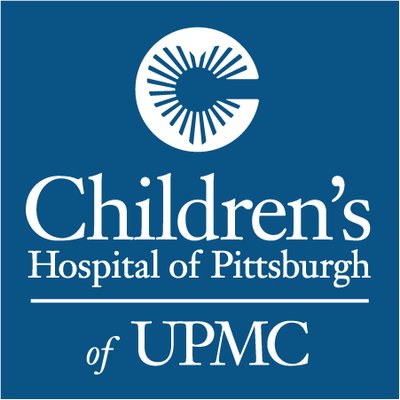Selumetinib in Treating Young Patients With Recurrent or Refractory Low Grade Glioma
| Status: | Recruiting |
|---|---|
| Conditions: | Cancer, Other Indications, Brain Cancer |
| Therapuetic Areas: | Oncology, Other |
| Healthy: | No |
| Age Range: | 3 - 21 |
| Updated: | 2/27/2019 |
| Start Date: | April 19, 2010 |
A Phase 1 and Phase II and Re-Treatment Study of AZD6244 for Recurrent or Refractory Pediatric Low Grade Glioma
This phase I/II trial studies the side effects and the best dose of selumetinib and how well
it works in treating or re-treating young patients with low grade glioma that has come back
(recurrent) or does not respond to treatment (refractory). Selumetinib may stop the growth of
tumor cells by blocking some of the enzymes needed for cell growth.
it works in treating or re-treating young patients with low grade glioma that has come back
(recurrent) or does not respond to treatment (refractory). Selumetinib may stop the growth of
tumor cells by blocking some of the enzymes needed for cell growth.
PRIMARY OBJECTIVES:
I. To estimate the maximum tolerated dose (MTD) or recommend a Phase II dose of AZD6244
(selumetinib) in children with recurrent or refractory low-grade glioma. (Phase I, completed
as of April 29, 2013) II. To describe the toxicity profile and define the dose limiting
toxicity of AZD6244 in children with recurrent or refractory low-grade glioma. (Phase I) III.
To study the safety of the maximum tolerated dose (MTD) or recommended a Phase II dose (RP2D)
of AZD6244 as determined based on safety data from children >= 12 years of age in children <
12 years of age; if the MTD/RP2D of the older children is too toxic for the younger children,
we will de-escalate to one dose level below and study the safety of that dose in the younger
age cohort. (Phase I) IV. To assess the sustained response rate of AZD6244 administered at 25
mg/m^2/dose twice daily (BID), in a single arm Phase II setting in patients assigned to
strata based on neurofibromatosis (NF)-1 status and presence or absence of v-raf murine
sarcoma viral oncogene homolog B (BRAF) aberrations, specifically BRAF V600E mutations and/or
BRAF KIAA1549 fusion identified by immunohistochemistry (IHC) and fluorescence in situ
hybridization (FISH), respectively. (Phase II) V. To estimate the sustained response rate and
prolonged disease stabilization rate (defined as lack of disease progression for >= 12
courses) associated with AZD6244 in patients with recurrent and/or progressive low-grade
gliomas who previously received treatment on PBTC-029 or PBTC-029B for a minimum of 12
courses, with at least stable disease or patients who had a sustained response but remained
on treatment < 12 courses. (Re-treatment Study)
SECONDARY OBJECTIVES:
I. To characterize the inter- and intra-patient variability in AZD6244 pharmacokinetics
administered on this schedule and to assess the influence of patient specific covariates
(including concomitant drug therapy) on AZD6244 pharmacokinetics. (Phase I) II. To evaluate
the feasibility of collecting pre-trial tumor samples and the feasibility of using in situ
hybridization assay to identify BRAF aberrations in available tumor specimens. (Phase I) III.
To determine if pre-trial tumor samples show the biochemical signature that indicates
activation of the mitogen-activated protein kinase (MAPK) pathway. (Phase I) IV. To describe
magnetic resonance imaging (MRI) characteristics of the tumors before and after treatment and
to explore the diffusion changes in the tumors before and after treatment to determine if
there is an early diffusion indicator of response. (Phase I) V. Within the constraints of a
Phase I trial, to document antitumor activity of treatment with AZD6244, as measured by
objective responses and progression-free survival (PFS). (Phase I) VI. To explore the
pharmacogenetic polymorphisms in AZD6244 metabolizing enzymes and transporters and relate
these polymorphisms to AZD6244 pharmacokinetics. (Phase I) VII. To estimate the PFS
distributions associated with AZD6244 treatment separately in patients assigned to the six
strata as well as for various other subsets e.g. histology and tumor grade across strata.
(Phase II) VIII. To explore correlations between BRAF aberrations and treatment response and
PFS in patients for whom relevant biology data are available. (Phase II) IX. To assess MAPK
aberrations by a combination of whole-exome and ribonucleic acid (RNA) sequencing. (Phase II)
X. To characterize the inter- and intra-patient variability in AZD6244 pharmacokinetics
administered on this schedule at the MTD/RP2D. (Phase II) XI. To determine progression-free
survival following re-treatment with AZD6244 for progressive, recurrent low-grade gliomas and
to evaluate the impact of variables such as previous response, interval treatment regimens,
BRAF status and previous dose of AZD6244. (Re-treatment Study) XII. To evaluate the toxicity
profile of re-treatment with AZD6244 and correlate with toxicities seen during initial
treatment. (Re-treatment Study) XIII. To evaluate the toxicity profile of re-treatment with
AZD6244 beyond 2 years for those patients who continue to show benefit from the drug, i.e. at
least stable disease (SD). (Re-treatment Study)
OUTLINE: This is a phase I dose-escalation study (completed as of April 29, 2013) followed by
a phase II study.
Patients receive selumetinib orally (PO) twice daily (BID) on days 1-28. Courses repeat every
28 days for up to 26 courses in the absence of disease progression or unacceptable toxicity.
Patients who experience a sustained objective response from selumetinib on the phase I or
phase II portions of the trial, and who have completed 2 years of treatment and stopped study
drug may be enrolled on the re-treatment study after progression/recurrence. Patients in the
re-treatment study may continue treatment indefinitely in the absence of disease progression
or unacceptable toxicities.
After completion of study treatment, patients are followed up for 30 days.
I. To estimate the maximum tolerated dose (MTD) or recommend a Phase II dose of AZD6244
(selumetinib) in children with recurrent or refractory low-grade glioma. (Phase I, completed
as of April 29, 2013) II. To describe the toxicity profile and define the dose limiting
toxicity of AZD6244 in children with recurrent or refractory low-grade glioma. (Phase I) III.
To study the safety of the maximum tolerated dose (MTD) or recommended a Phase II dose (RP2D)
of AZD6244 as determined based on safety data from children >= 12 years of age in children <
12 years of age; if the MTD/RP2D of the older children is too toxic for the younger children,
we will de-escalate to one dose level below and study the safety of that dose in the younger
age cohort. (Phase I) IV. To assess the sustained response rate of AZD6244 administered at 25
mg/m^2/dose twice daily (BID), in a single arm Phase II setting in patients assigned to
strata based on neurofibromatosis (NF)-1 status and presence or absence of v-raf murine
sarcoma viral oncogene homolog B (BRAF) aberrations, specifically BRAF V600E mutations and/or
BRAF KIAA1549 fusion identified by immunohistochemistry (IHC) and fluorescence in situ
hybridization (FISH), respectively. (Phase II) V. To estimate the sustained response rate and
prolonged disease stabilization rate (defined as lack of disease progression for >= 12
courses) associated with AZD6244 in patients with recurrent and/or progressive low-grade
gliomas who previously received treatment on PBTC-029 or PBTC-029B for a minimum of 12
courses, with at least stable disease or patients who had a sustained response but remained
on treatment < 12 courses. (Re-treatment Study)
SECONDARY OBJECTIVES:
I. To characterize the inter- and intra-patient variability in AZD6244 pharmacokinetics
administered on this schedule and to assess the influence of patient specific covariates
(including concomitant drug therapy) on AZD6244 pharmacokinetics. (Phase I) II. To evaluate
the feasibility of collecting pre-trial tumor samples and the feasibility of using in situ
hybridization assay to identify BRAF aberrations in available tumor specimens. (Phase I) III.
To determine if pre-trial tumor samples show the biochemical signature that indicates
activation of the mitogen-activated protein kinase (MAPK) pathway. (Phase I) IV. To describe
magnetic resonance imaging (MRI) characteristics of the tumors before and after treatment and
to explore the diffusion changes in the tumors before and after treatment to determine if
there is an early diffusion indicator of response. (Phase I) V. Within the constraints of a
Phase I trial, to document antitumor activity of treatment with AZD6244, as measured by
objective responses and progression-free survival (PFS). (Phase I) VI. To explore the
pharmacogenetic polymorphisms in AZD6244 metabolizing enzymes and transporters and relate
these polymorphisms to AZD6244 pharmacokinetics. (Phase I) VII. To estimate the PFS
distributions associated with AZD6244 treatment separately in patients assigned to the six
strata as well as for various other subsets e.g. histology and tumor grade across strata.
(Phase II) VIII. To explore correlations between BRAF aberrations and treatment response and
PFS in patients for whom relevant biology data are available. (Phase II) IX. To assess MAPK
aberrations by a combination of whole-exome and ribonucleic acid (RNA) sequencing. (Phase II)
X. To characterize the inter- and intra-patient variability in AZD6244 pharmacokinetics
administered on this schedule at the MTD/RP2D. (Phase II) XI. To determine progression-free
survival following re-treatment with AZD6244 for progressive, recurrent low-grade gliomas and
to evaluate the impact of variables such as previous response, interval treatment regimens,
BRAF status and previous dose of AZD6244. (Re-treatment Study) XII. To evaluate the toxicity
profile of re-treatment with AZD6244 and correlate with toxicities seen during initial
treatment. (Re-treatment Study) XIII. To evaluate the toxicity profile of re-treatment with
AZD6244 beyond 2 years for those patients who continue to show benefit from the drug, i.e. at
least stable disease (SD). (Re-treatment Study)
OUTLINE: This is a phase I dose-escalation study (completed as of April 29, 2013) followed by
a phase II study.
Patients receive selumetinib orally (PO) twice daily (BID) on days 1-28. Courses repeat every
28 days for up to 26 courses in the absence of disease progression or unacceptable toxicity.
Patients who experience a sustained objective response from selumetinib on the phase I or
phase II portions of the trial, and who have completed 2 years of treatment and stopped study
drug may be enrolled on the re-treatment study after progression/recurrence. Patients in the
re-treatment study may continue treatment indefinitely in the absence of disease progression
or unacceptable toxicities.
After completion of study treatment, patients are followed up for 30 days.
Inclusion Criteria:
- Imaging evaluations necessary to establish eligibility for study entry must be done
within three (3) weeks prior to registration
- All other evaluations necessary to establish eligibility for study entry must be done
within two (2) weeks prior to registration
- Patients must start therapy within 7 calendar days of registration
- Laboratory values must be no older than seven (7) days prior to the start of therapy;
if a test that is repeated after registration and prior to therapy is outside the
limits for eligibility, it must be rechecked within 48 hours prior to the start of
therapy; if laboratory values still fail to meet eligibility criteria, the patient may
not receive protocol therapy
- All patients must meet the following inclusion and exclusion criteria; NO EXCEPTIONS
WILL BE GIVEN
- Participant is willing to sign a screening consent and provide pre-trial tumor
material for BRAF testing (both for BRAF V^600E mutation and BRAF KIAA1549 fusion
assessments)
- All patients who are candidates for enrollment in stratum 5 based on their tumor
histology must be pre-screened
- Screening may be applied to potential stratum 1 and 2 patients
- Patients whose prior BRAF testing was performed at another lab (Clinical Laboratory
Improvement Amendments [CLIA]/College of American Pathologist [CAP] certified or
otherwise) must send additional tumor material to Brigham and Women's Hospital (BWH)
for confirmation; however, to preserve available tumor material, patients whose tumor
material has previously undergone BRAF analysis at the Lindeman and Ligon Labs at
Brigham and Women's Hospital using the same procedures as described in this protocol,
will not be required to submit additional tumor material for analysis; these patients
must have both the BRAFV600E mutation and BRAF KIAA1549 fusion assessments done and if
only one test was previously conducted; additional tissue will be required for the
second test
- Patient must have one of the following:
- For stratum 5: non NF-1 associated low grade glioma (LGG) (other than pilocytic
astrocytoma or optic pathway glioma)
- For stratum 1 or 2: non NF-1, non-optic pathway pilocytic astrocytoma; note: all
patients with non NF-1 associated optic pathway glioma with or without tissue
must be enrolled on stratum 4
- Patients with sporadic (non NF-1 associated), histologically diagnosed progressive,
recurrent or refractory non-optic pathway pilocytic astrocytoma who have pre-
treatment tumor tissue available for BRAF analysis
- NF-1 patients with radiographic evidence of a progressive, recurrent or refractory low
grade glioma, with or without pre-treatment tumor tissue
- Patients with progressive, recurrent or refractory optic pathway glioma, with or
without pre-treatment tumor tissue
- Patients with histologically diagnosed progressive, recurrent or refractory non NF-1
associated LGG (other than pilocytic astrocytoma or optic pathway glioma); these
patients must have BRAF aberrations as documented by the Lindeman and Ligon Labs at
Brigham and Women's Hospital using the same procedures
- Patients will be assigned to one of 6 strata prior to enrollment; all BRAF assessments
used for stratification below must be done at the Lindeman and Ligon Labs at Brigham
and Women's Hospital using the same procedures as described in this protocol;
assessments for both BRAF V^600E mutation and BRAF KIAA1549 fusion are required for
patients who will enroll on strata 1, 2 and 5
- Stratum 1: patients with non NF-1 associated progressive, recurrent or refractory
pilocytic astrocytoma with pre-trial tumor material available and with a BRAF
aberration i.e. BRAFV^600E mutation and/or BRAF KIAA1549 fusion as determined by
IHC and FISH, respectively; patients with optic pathway glioma are excluded
- Stratum 2: patients with non NF-1 associated progressive, recurrent or refractory
pilocytic astrocytoma with pre-trial tumor material available and without a BRAF
aberration i.e. BRAF^V600E mutation and/or BRAF KIAA1549 fusion as determined by
IHC and FISH, respectively; patients with optic pathway glioma are excluded
- Stratum 3: patients with neuro-fibromatosis 1 (NF-1) associated progressive,
recurrent or refractory low grade glioma (World Health Organization [WHO] grade I
& II), with or without tissue
- Stratum 4*: patients with non-NF1 associated progressive, recurrent or refractory
optic pathway glioma with or without tissue available for BRAF evaluation
- Stratum 5: patients with non NF-1 associated progressive, recurrent or refractory
low grade glioma other than pilocytic astrocytoma or optic pathway glioma with a
documented BRAF aberration identified in pre-trial tumor material
- Stratum 6: patients with non-NF-1 associated progressive, recurrent or refractory
low grade glioma (other than optic pathway glioma [OPG]) with tissue available
for BRAF analyses who cannot be classified into stratum 1, 2 or 5 due to
inadequate tissue quality, assay failure, etc
- Clarification: Stratum 4 was specifically designed for patients with
hypothalamic/optic pathway gliomas; the intent is that if there is any optic
chiasm invasion regardless of where the tumor is originating from (chiasm
vs. hypothalamus vs. other location), the patient should be enrolled on
Stratum 4, regardless of whether the tumor has been biopsied or not;
obviously, there are some tumors that include part of the hypothalamus and
clearly do NOT include the chiasm at all; in these situations, and if the
tumor is a biopsy proven pilocytic astrocytoma, these patients should be
enrolled on Stratum 1 or 2 (depending upon BRAF status)
- Patients must have bi-dimensionally measurable disease defined as at least one lesion
that can be accurately measured in at least two planes in order to be eligible for
this study
- Patients must have received prior therapy other than surgery and must have fully
recovered from the acute toxic effects of all prior chemotherapy, immunotherapy,
biologic therapy or radiotherapy prior to study entry
- Patients must have received their last dose of known myelosuppressive anticancer
chemotherapy at least three weeks prior to study registration or at least six weeks if
nitrosourea
- Patient must have received their last dose of the biologic agent >= 7 days prior to
study registration
- For biologic agents that have a prolonged half-life, at least three half-lives
must have elapsed prior to registration
- Monoclonal antibody treatment: at least three half-lives must have elapsed prior to
registration
- Radiation: patients must have:
- Had their last fraction of local irradiation to primary tumor >= 12 months prior
to registration; investigators are reminded to review potentially eligible cases
to avoid confusion with pseudo-progression
- Had their last fraction of craniospinal irradiation (> 24 Gy) > 3 months prior to
registration
- Corticosteroids: patients who are receiving dexamethasone must be on a stable or
decreasing dose for at least 1 week prior to registration
- Patients must be off all colony-forming growth factor(s) for at least 1 week prior to
registration (filgrastim, sargramostim, erythropoietin) and at least 2 weeks for
long-acting formulations
- Patients must have a body surface area (BSA) >= 0.55 m^2
- Patients with neurological deficits should have deficits that are stable for a minimum
of 1 week prior to registration
- Patients must be able to swallow capsules
- Karnofsky performance scale (KPS for > 16 years [yrs.] of age) or Lansky performance
score (LPS for =< 16 years of age) >= 60 assessed within two weeks prior to
registration
- Absolute neutrophil count >= 1,000/uL (unsupported) (within 14 days of registration
and within 7 days of the start of treatment)
- Platelets >= 100,000/L (unsupported) (within 14 days of registration and within 7 days
of the start of treatment)
- Hemoglobin >= 8 g/dL (may be supported) (within 14 days of registration and within 7
days of the start of treatment)
- Aspartate aminotransferase (AST) (serum glutamic oxaloacetic transaminase
[SGOT])/alanine aminotransferase (ALT) (serum glutamate pyruvate transaminase [SGPT])
=< 2.5 X institutional upper limit of normal for age (within 14 days of registration
and within 7 days of the start of treatment)
- Total bilirubin < 1.5 times upper limit of normal for age (within 14 days of
registration and within 7 days of the start of treatment)
- Albumin >= 3 g/dL (within 14 days of registration and within 7 days of the start of
treatment)
- Serum sodium and potassium within the institutional limits of normal (within 14 days
of registration and within 7 days of the start of treatment)
- Serum calcium and magnesium above the institutional lower limit of normal (within 14
days of registration and within 7 days of the start of treatment)
- Creatinine clearance or radioisotope glomerular filtration rate (GFR) >= 70
ml/min/1.73m^2 or a serum creatinine based on age as follows (within 14 days of
registration and within 7 days of the start of treatment):
- =< 5 years: 0.8 mg/dL
- > 5 years but =< 10 years: 1 mg/dL
- > 10 years but =< 15 years: 1.2 mg/dL
- > 15 years: 1.5 mg/dL
- Left ventricular ejection fraction (LVEF) >= 55%
- Corrected QT (QTc) interval =< 450 msecs
- Hypertension:
- Patients, 3-17 years of age must have a blood pressure that is =< 95th percentile
for age, height and gender at the time of registration
- The normal blood pressure by height, age and gender tables can be accessed
in the Generic Forms section of the Pediatric Brain Tumor Consortium (PBTC)
members' webpage
- Patients who are >= 18 years of age must have a blood pressure that is < 140/90
mm of Hg at the time of registration
- Note: if a blood pressure (BP) reading prior to registration is above the 95th
percentile for age, height and gender it must be rechecked and documented to be
=< the 95th percentile for age, height and gender prior to patient registration
- Female patients of childbearing potential must not be pregnant or breast-feeding;
female patients of childbearing potential must have a negative serum or urine
pregnancy test
- Women of child-bearing potential and men must agree to use adequate contraception
(hormonal or barrier method of birth control; abstinence) prior to study entry and for
the duration of study participation, and for four weeks after dosing with AZD6244
ceases; women of child-bearing potential must have a negative pregnancy test prior to
entry; should a woman become pregnant or suspect she is pregnant while she or her
partner is participating in this study, she should inform her treating physician
immediately; please note that the AZD6244 manufacturer recommends that adequate
contraception for male patients should be used for 16 weeks post-last dose due to
sperm life cycle
- Ability to understand and the willingness to sign a written informed consent document
according to institutional guidelines
- ELIGIBILITY CRITERIA FOR ENROLLMENT ON THE RE-TREATMENT STUDY
- Patients must have recurrence or progression of their low-grade glioma after coming
off treatment with AZD6244 on PBTC-029 or PBTC-029B, with or without having received
additional anti-tumor therapy following discontinuation of AZD6244; the progression
must be unequivocal and sufficient to warrant re-treatment in the opinion of the
investigator; progression will be defined as either progressive disease (PD) that
meets the study definitions of progressive disease by MRI or vision deterioration
thought to be related to tumor in patients with optic pathway tumors
- Patients must have received treatment on PBTC-029 or PBTC-029B for a minimum of 12
courses with at least stable disease, or had a sustained response (partial response
[PR]/ complete response [CR]) but remained on treatment < 12 courses
- Patients must have bi-dimensionally measurable disease defined as at least one lesion
that can be accurately measured in at least two planes
- Patients must have fully recovered from the acute toxic effects of all prior
chemotherapy, immunotherapy, biologic therapy or radiotherapy prior to study entry
- Myelosuppressive chemotherapy: Patients must have received their last dose of
known myelosuppressive anticancer chemotherapy at least three weeks prior to
registration on the Re-treatment Study or at least six weeks if a nitrosourea
- Biologic agent: Patient must have received their last dose of the biologic agent
>= 7 days prior to study registration; for biologic agents and monoclonal
antibody treatment, at least three half-lives must have elapsed prior to
registration
- Other investigational agents (not fitting into one of the above specified
categories): patients must have received their last dose of any other
investigational agent greater than 28 days prior to enrollment
- Radiation: Patients must have:
- Had their last fraction of local irradiation to the primary tumor >= 12
months prior to registration; investigators are reminded to review
potentially eligible cases to avoid confusion with pseudo-progression;
- Had their last fraction of craniospinal irradiation (> 24Gy) > 3 months
prior to registration
- Corticosteroids: Patients who are receiving dexamethasone must be on a stable or
decreasing dose for at least 1 week prior to registration
- Growth factors: Patients must be off all colony-forming growth factor(s) for at
least 1 week prior to registration (filgrastim, sargramostim, erythropoietin) and
at least 2 weeks for long-acting formulations
Exclusion Criteria:
- Patients with any clinically significant unrelated systemic illness (serious
infections or significant cardiac, pulmonary, hepatic or other organ dysfunction),
likely interfere with the study procedures or results
- Patients who are receiving any other anticancer or investigational agents
- Patients with uncontrolled seizures
- Previous mitogen-activated protein kinase (MEK) inhibitor use such as PD-0325901;
CI1040; AS73026; GDC 0973; ARRY43182; GSK110212
- Prior treatment with a BRAF inhibitor such as vemurafenib or dabrafenib (previous
treatment with sorafenib is allowed)
- Patients with other factors that increase the risk of QT prolongation or arrhythmic
events (e.g., heart failure, hypokalemia, family history of long QT interval syndrome)
that meets New York Heart Association (NYHA) class II or above
- Required use of a concomitant medication that can prolong the QT interval
- History of allergic reactions attributed to compounds of similar chemical or biologic
composition to AZD6244
We found this trial at
16
sites
San Francisco, California 94115
Principal Investigator: Anuradha Banerjee
Phone: 415-476-3831
Click here to add this to my saved trials
3333 Burnet Avenue # Mlc3008
Cincinnati, Ohio 45229
Cincinnati, Ohio 45229
1-513-636-4200

Principal Investigator: Mariko D. DeWire-Schottmiller
Phone: 513-803-1126
Cincinnati Children's Hospital Medical Center Patients and families from across the region and around the...
Click here to add this to my saved trials
4650 Sunset Blvd
Los Angeles, California 90027
Los Angeles, California 90027
(323) 660-2450

Principal Investigator: Girish Dhall
Phone: 323-361-4629
Childrens Hospital Los Angeles Children's Hospital Los Angeles is a 501(c)(3) nonprofit hospital for pediatric...
Click here to add this to my saved trials
262 Danny Thomas Pl
Memphis, Tennessee 38105
Memphis, Tennessee 38105
(901) 495-3300

Principal Investigator: Giles W. Robinson
Phone: 901-595-2907
St. Jude Children's Research Hospital St. Jude is unlike any other pediatric treatment and research...
Click here to add this to my saved trials
4401 Penn Avenue
Pittsburgh, Pennsylvania 15224
Pittsburgh, Pennsylvania 15224
412-692-5325

Principal Investigator: Ian F. Pollack
Phone: 412-692-5881
Children's Hospital of Pittsburgh of UPMC UPMC is one of the leading nonprofit health systems...
Click here to add this to my saved trials
13123 E 16th Ave
Aurora, Colorado 80045
Aurora, Colorado 80045
(720) 777-1234

Principal Investigator: Kathleen M. Dorris
Phone: 720-777-8314
Children's Hospital Colorado At Children's Hospital Colorado, we see more, treat more and heal more...
Click here to add this to my saved trials
9000 Rockville Pike
Bethesda, Maryland 20892
Bethesda, Maryland 20892
301-496-2563

Principal Investigator: Katherine E. Warren
Phone: 301-435-4683
National Institutes of Health Clinical Center The National Institutes of Health (NIH) Clinical Center in...
Click here to add this to my saved trials
Chicago, Illinois 60614
Principal Investigator: Stewart Goldman
Phone: 312-227-4844
Click here to add this to my saved trials
Chicago, Illinois 60614
Principal Investigator: Stewart Goldman
Phone: 773-880-4562
Click here to add this to my saved trials
2301 Erwin Rd
Durham, North Carolina 27710
Durham, North Carolina 27710
919-684-8111

Principal Investigator: Jason R. Fangusaro
Phone: 773-880-4562
Duke Univ Med Ctr As a world-class academic and health care system, Duke Medicine strives...
Click here to add this to my saved trials
Click here to add this to my saved trials
6621 Fannin St
Houston, Texas 77030
Houston, Texas 77030
(832) 824-1000

Principal Investigator: Patricia A. Baxter
Phone: 832-824-4681
Texas Children's Hospital Texas Children's Hospital, located in Houston, Texas, is a not-for-profit organization whose...
Click here to add this to my saved trials
1275 York Ave
New York, New York 10021
New York, New York 10021
(212) 639-2000

Principal Investigator: Ira J. Dunkel
Phone: 212-639-2153
Memorial Sloan Kettering Cancer Center Memorial Sloan Kettering Cancer Center — the world's oldest and...
Click here to add this to my saved trials
725 Welch Rd
Palo Alto, California 94304
Palo Alto, California 94304
(650) 497-8000

Principal Investigator: Michelle Monje
Phone: 650-721-5750
Lucile Packard Children's Hospital Stanford University Stanford Children's Health is the only network in the...
Click here to add this to my saved trials
Click here to add this to my saved trials
111 Michigan Ave NW
Washington, District of Columbia
Washington, District of Columbia
(202) 476-5000

Principal Investigator: Eugene I. Hwang
Phone: 202-476-5046
Childrens National Medical Center As the nation’s children’s hospital, the mission of Children’s National Medical...
Click here to add this to my saved trials